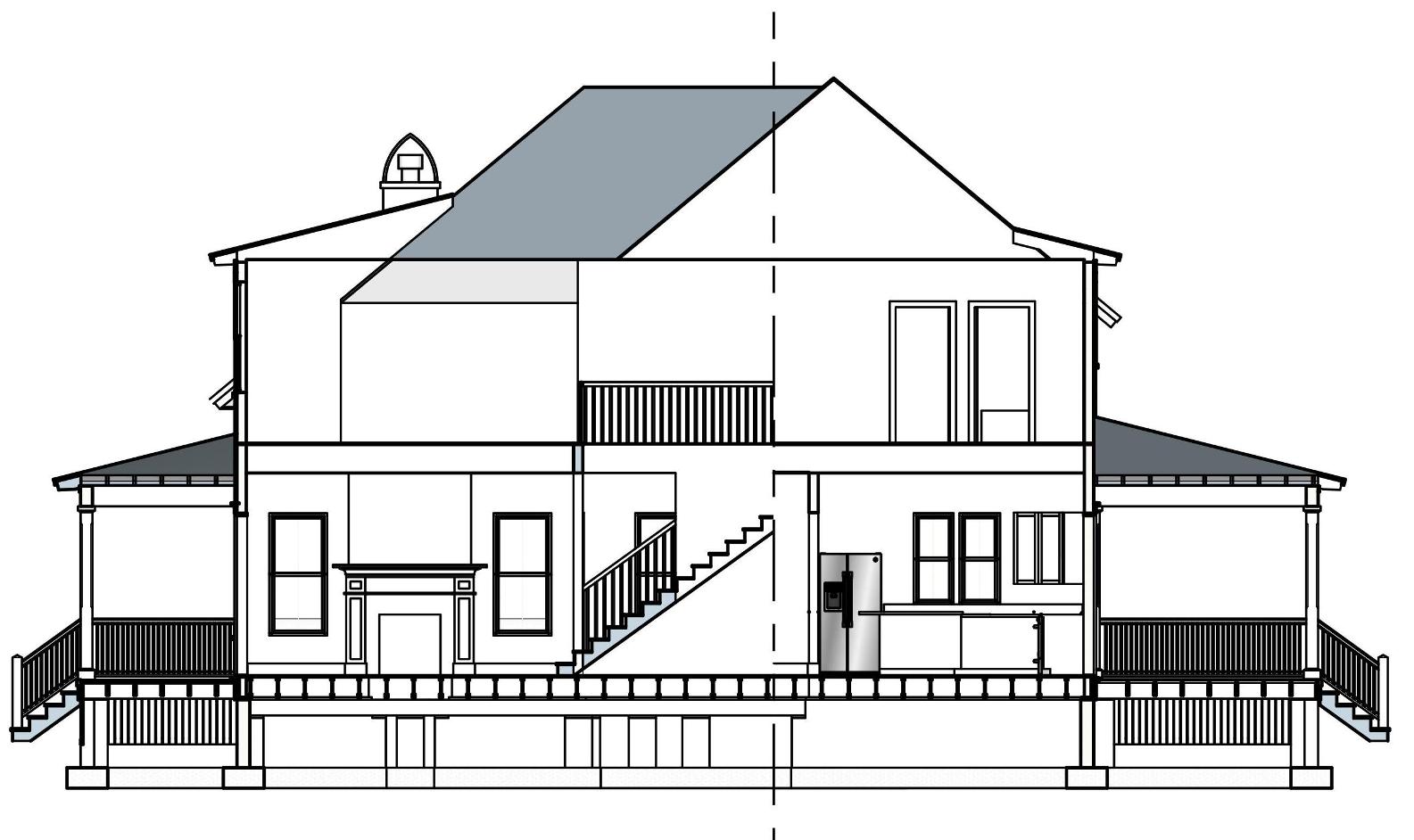Monochrome Floor Plans
-
First things first. I am enjoying this thread and the friendly and constructive discourse. The first plans where more for presentation and are in their infancy. Trust me the construction document version would be much cleaner with no shadows etc. And I'm working on things like line weight. I am also working on the sections. My only goal here is to dismiss the idea that you can't have offset sections.
As a matter of fact plan views are in fact horizontal sections and have always been. I too held a pencil and am a classically trained draftsman.
Anyway it's quite simple you create two sections in SU import to layout, clip and align and bingo. If you look at the second floor plan I used a similar technic to keep the lower roofs from being cut. I simply used a section cut higher hide what I didn't want and placed it over the second floor plan (horizontal section).
PS add to wish list backside clipping.

-
Yes with enough information the 3d model can generate orthograhic images as needed. Rendered sections and elevations actually can be quite informative for the feel of a space, if not the details for construction. I find that plans are more symbolic than representational and still find 2d approach is the straighter path to a finished product. Sections are similar for me, but mostly because I don't usually complete the model to show enough detail. I sometimes use the model cut image (dwg) to begin drawing the section.
-
@ccaponigro said:
Trust me the construction document version would be much cleaner with no shadows etc.
I think you hit it on the head!!!! "construction document version would be much cleaner with no shadows". So let me get this right? For the construction guys (who read plans every day) you will make the plans clearer. But for the buyer (who rarely reads a plan) you are going to make the plan less legible? Hmmm!
@ccaponigro said:
Hope this isn't to abrupt but I say nonsense. It's time to let go of those old ways of thinking and working and the tools available demand it of us.
I said this before, it is only those new too these tools adapting their use to this style of presentation. If you ever correspond with a high end architectural publisher their guidelines will clearly state that all plans must be clear B&W linework with no shadows - why? For clear legibility.
Do some searching around the internet, you will find 3D or shadowed plans used "only" by the very low end of the market, with the exception of where in print material the plan might occur on the same page as full colour renders or photographs, and even in this instance it will be for sales, not in the demonstration of the design. AND even if presented this way they the shadows will be added via illustrator so as to have far better softness control. Big Heavy shadows and colour visually reduce room size, this is the VERY last thing a marketeer wants!
Also shadows (not so much colour) tend to reduce the viewers ability to recognise rationalisation of the planning (alignment and justification of doors, windows and walls) that the architect has achieved to create harmony and calm rather than chaos and discourse. The reader will unconsciously pick this up in the simplicity or READ! Without it the reader is left hunting. The result is that the reader is less appreciative of these attributes.
-
Advertisement







